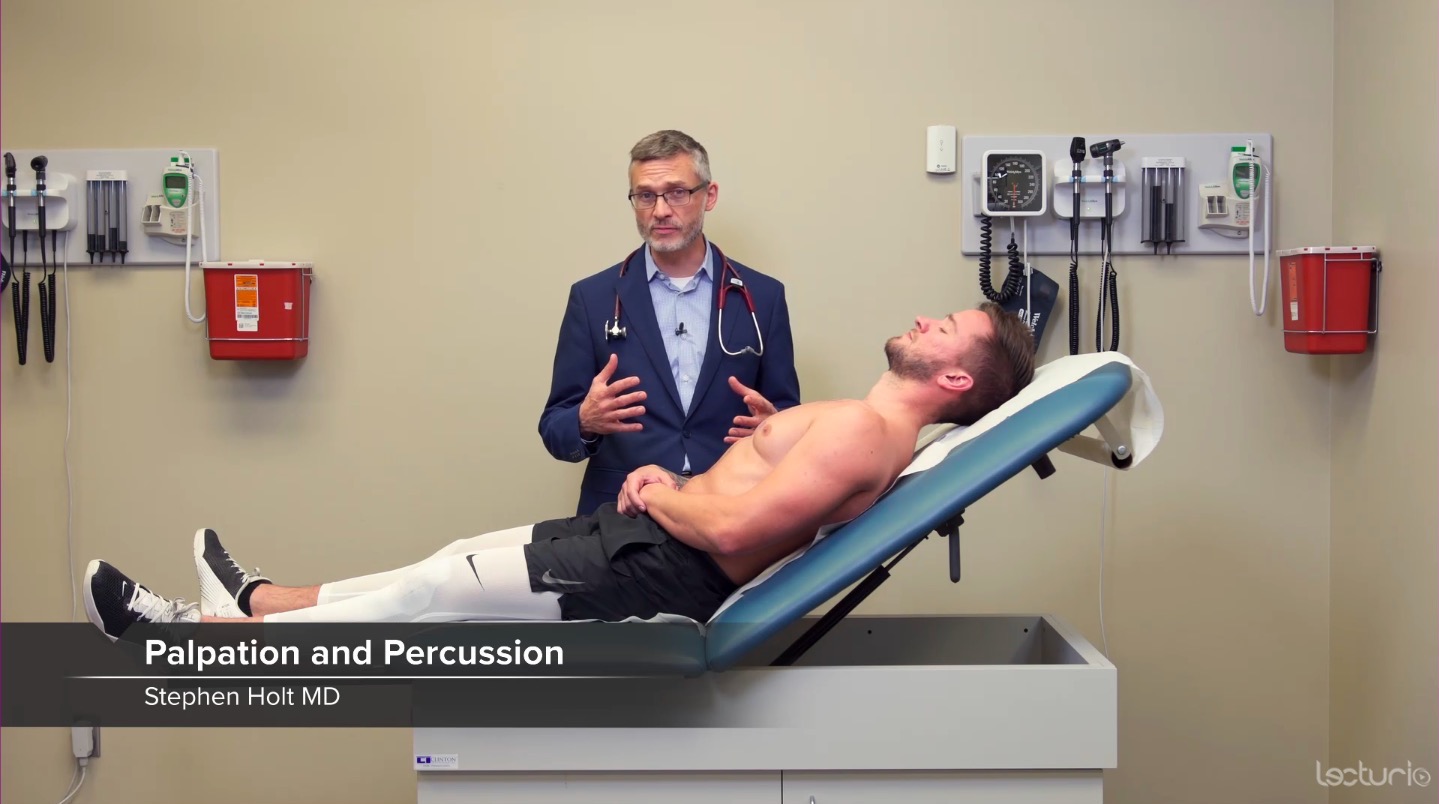Playlist
Show Playlist
Hide Playlist
Patient Introduction and Review of Lung and Heart Anatomy
-
Slides Physical Exam Shortness of Breath Introduction.pdf
-
Reference List Physical Examination.pdf
-
Download Lecture Overview
00:01 So let's start off by taking look at a patient with shortness of breath. 00:05 So this is a 59-year-old woman with a medical history of type two diabetes and tobacco use disorder who's presenting with a cough, left-sided pleuritic chest pain and shortness of breath for the last two days. 00:19 Now, just starting off with that history I can tell there's a lot of different things that could be going on, even if we may be leaning towards this being infectious. 00:27 So let's take a look at an overarching view of how we think about shortness of breath. 00:32 So you can have causes like central nervous system causes of difficulty of breathing. 00:36 A good example of that would be something like Guillain-Barre syndrome where there's actually a problem with the neuromuscular activation of the diaphragm and the intercostal muscles. 00:45 A pulmonary cause of which there are many that we'll talk about, and cardiovascular causes. 00:51 For the purposes of the physical exam in this section, we're really going to focus on the latter two. 00:56 Either way, shortness of breath is no question, one of the most common symptoms that folks present with in emergency room. 01:04 So when we think about pulmonary causes of shortness of breath, whatever the etiology, they all involve an impairment in getting oxygen from the air into your blood stream. 01:17 In contrast, cardiovascular problems involve getting that oxygen that's now in your blood stream, in your pulmonary vascular bed, to the peripheral tissues, your brain, your muscles, all your organs. 01:31 In terms of the experience of being short of breath, that boils down to a common pathway which is the central and peripheral chemoreceptors that are detecting problems with low oxygen tension or elevated CO2. 01:46 These stimulate respiratory drive and ultimately give the sensation of dyspnea. 01:54 We should also review a little bit of lung anatomy. 01:58 Remember that the right lung is composed of three lobes, the superior lobe, the middle lobe, and an inferior lobe; where as the left lobe just has a superior and an inferior lobe, with smaller lingula. 02:13 And now thinking about common causes of shortness of breath, specifically within the pulmonary realm there's pneumonia, COPD, asthma exacerbations, interstitial lung disease which is of course a more indolent slowly progressive disease. 02:30 Pleural effusions which can be either acute or chronic, pneumothorax, non-cardiogenic pulmonary edema, and pulmonary embolism amongst a host of other potential possibilities. 02:43 And quickly reviewing cardiac anatomy, blood returns to the right atrium via the superior or inferior vena cava, then they're going to go through the tricuspid valve to the right ventricle out through the pulmonary valve to the pulmonary vascular bed via the pulmonary arteries, then will return to the heart into the left atrium through the mitral valve to the left ventricle and then out the aortic valve through the aortic outflow tract. 03:10 Disease anywhere in the ventricular wall, in the valves, or elsewhere in terms of cardiac function, could manifest with shortness of breath. 03:21 So congestive heart failure, coronary artery disease which could be stable in the setting of stable angina, or you could have acute coronary syndrome or unstable angina. 03:33 Cardiac arrhythmias can certainly manifest as shortness of breath problems particularly with a more aggressive super ventricular tachycardia, cardiac tamponade which is kind of an outside problem that is pushing in on the walls of the four chambers of the heart, and then of course, valvular heart disease which when they progress, can absolutely cause problems with shortness of breath and potentially, even heart failure and syncope. 04:00 So returning to our case, there's a lot of things on our list to think about here and those would include pneumonia, with or without an effusion; a COPD exacerbation; heart failure; pulmonary emboli and acute coronary syndrome would be certainly something we'd be worried about in our patient with smoking and diabetes and then pericarditis, with or without cardiac tamponade. 04:26 So we're going to really need to rely upon our physical exam to help to raise or lower certain conditions on our differential diagnosis that will help to dictate subsequent evaluation and management.
About the Lecture
The lecture Patient Introduction and Review of Lung and Heart Anatomy by Stephen Holt, MD, MS is from the course Examination of Cardiovascular and Respiratory System.
Included Quiz Questions
Which cause of shortness of breath is primarily due to a pulmonary etiology?
- Pneumothorax
- Guillain-Barré syndrome
- Arrhythmia
- Valvular disease
- Cardiac tamponade
Which statement demonstrates the correct path of cardiac blood flow?
- Blood flows from the left atrium to the left ventricle through the mitral valve.
- Blood flows from the left atrium to the left ventricle through the tricuspid valve.
- Blood flows from the right atrium to the right ventricle through the mitral valve.
- Blood flows from the left atrium to the left ventricle through the pulmonary valve.
- Blood flows from the right ventricle to the aorta through the aortic valve.
Customer reviews
5,0 of 5 stars
| 5 Stars |
|
1 |
| 4 Stars |
|
0 |
| 3 Stars |
|
0 |
| 2 Stars |
|
0 |
| 1 Star |
|
0 |
Agree ???? with you and it's very important Difference than others




